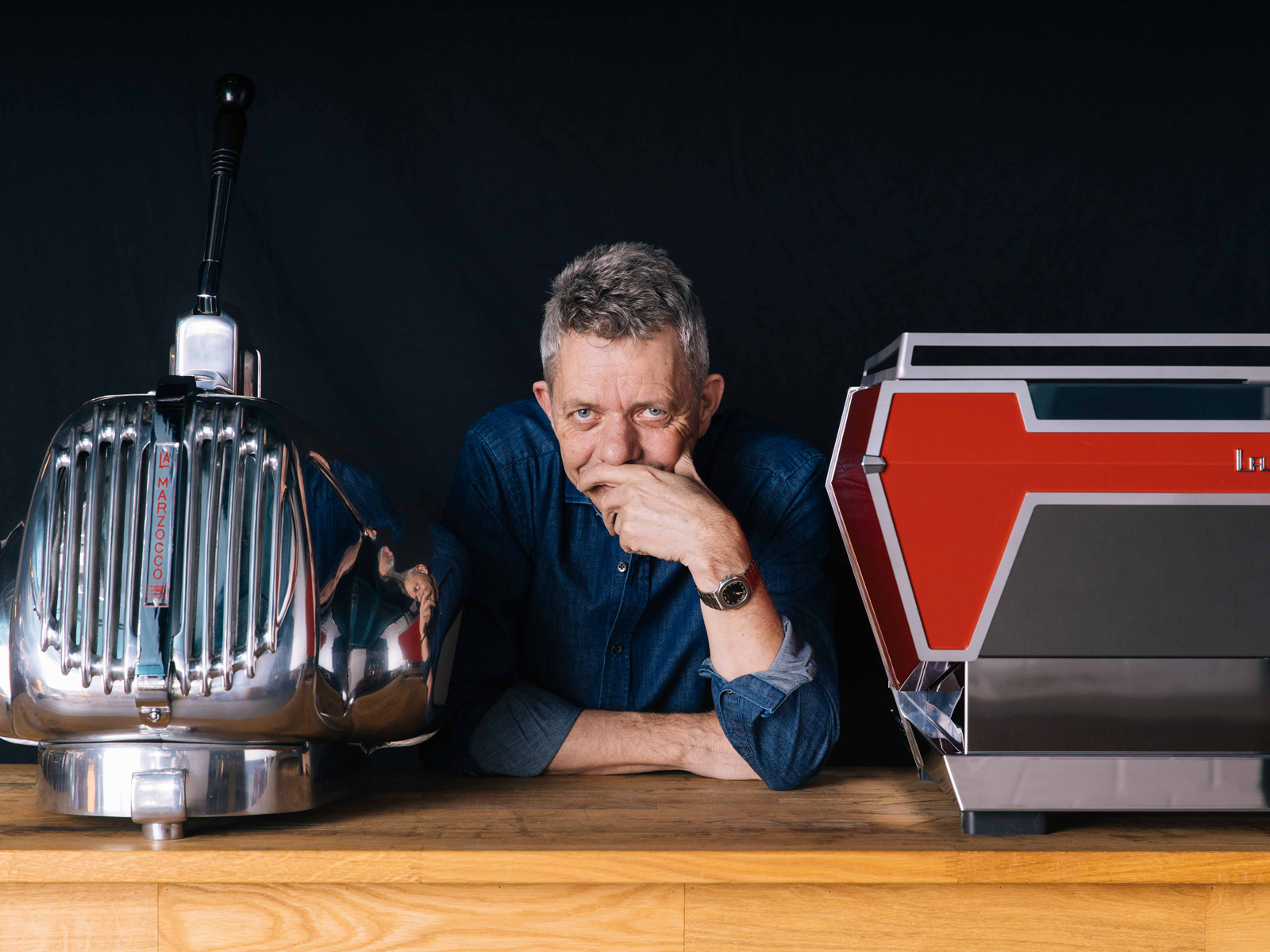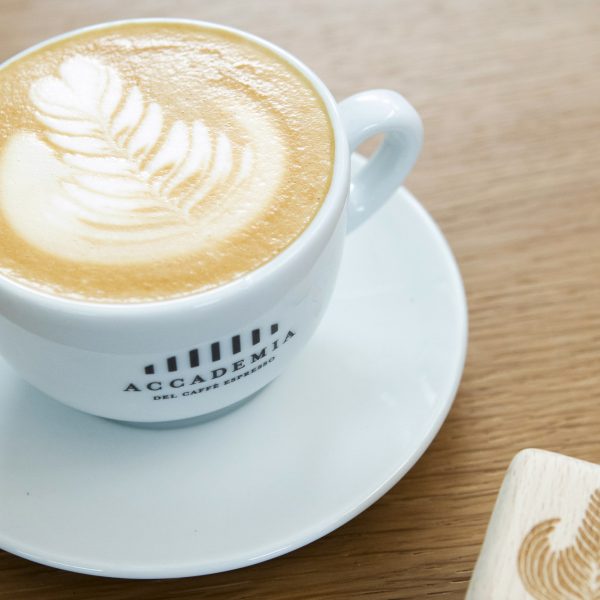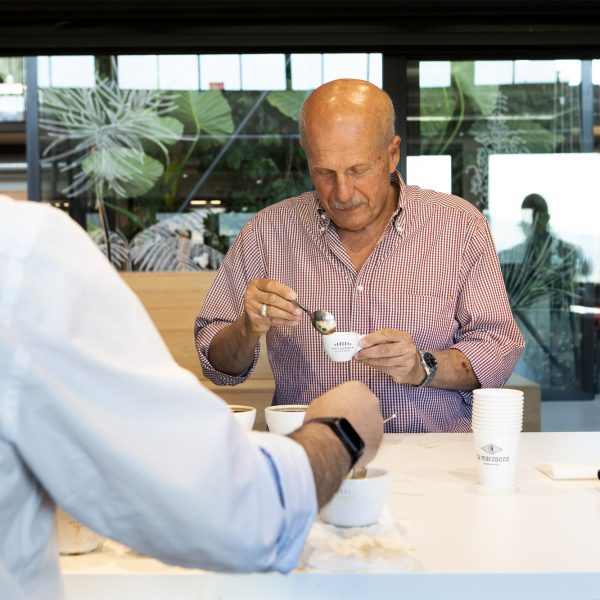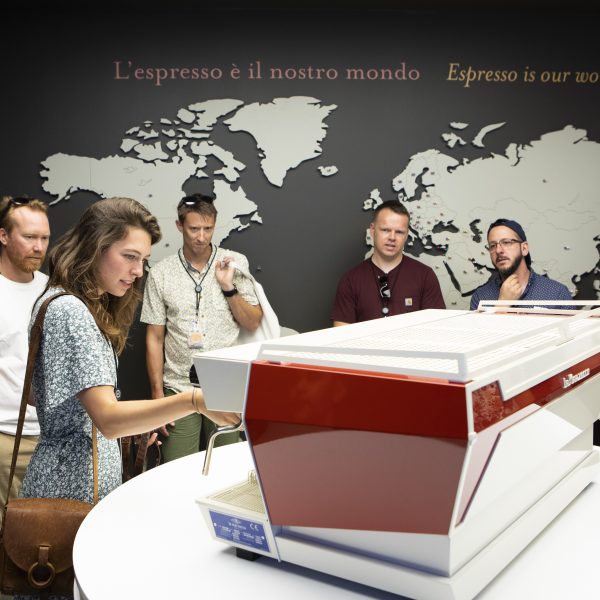Blog
A Coffee with Henk Langkemper
I visited La Marzocco for the first time in May 2006. That was the first time I went to the factory. Before that, some La Marzocco machines were built by Kees van der Westen, a Dutch company which used La Marzocco parts. La Marzocco was known in the Netherlands because there were some machines around, but we only had a few real La Marzocco machines supplied from Italy. I saw a machine like that in the Netherlands and said, “Oh, wow, it makes a great coffee.”
But at that time, Kees van der Westen was also a big friend of Kent (Bakke), because Kent collected machines and Kees built beautiful one-off machines. Kees was a distributor for La Marzocco.
When Guido (Bernardinelli) and Lorenzo (Carboni) and all the other guys came into La Marzocco, they said, “In the Netherlands we don’t have a distributor, so we have to find a new one.” But that was a difficult issue because Kent had a relationship with Kees van der Westen. In the end, Kees decided to build another machine, so there wasn’t any use to be a La Marzocco distributor.
I thought it was a good idea to talk with La Marzocco to be a distributor for the Netherlands. My first contact with La Marzocco was when I saw machines in Copenhagen. I saw a barista working at the coffee machine and I learned a lot about how to make good coffee. Then I thought this Linea machine could be useful for the Dutch market.
I thought about it, but of course, La Marzocco machines were far more expensive than the machines we sold in the Netherlands at that time. It took about six months in between the first contact with the brand and the talk with Kees again about La Marzocco. I asked Kees van der Westen if I could take over the brand and if he could call someone from La Marzocco to introduce me. Kees van der Westen made a phone call to Lorenzo Carboni, and he said, “There’s a guy in the Netherlands, and maybe he can be useful as a distributor, but he wants to talk to you.”
I wanted the brand so badly that I went home and called Lorenzo and said, “I’m the guy from the Netherlands and I want to talk to you as soon as possible and I want to order a machine.” Then Lorenzo said, “Listen, Henk, we’re going to the World Barista Championship in Bern, Switzerland. We’re very busy with that, so we cannot help you now, but let’s meet up in Bern.” I said, “No, no, that’s not good enough. You don’t understand me, I want to have a machine that we can test.” Then Lorenzo said, “No, you’re a new style distributor, and we won’t deliver any machines to people we don’t know. Also, you need a training.” I said, “A training?” I was already in the coffee business for maybe 18 years at that time. But I said, “Okay, then we will come for a training. If that’s the rule, then we will do it like that.” So, in the end, we met up in Bern. That was my first contact and I also met Piero Bambi there for the first time.
I met Lorenzo and Piero, but there was no contract or deal at that time. I also met Kent and I said, “I will come to Florence as soon as possible, and we will have a training then.” The week after Bern, I flew to Florence with Frank, my technician.
That’s where I met Lorenzo again, and Guido for the first time. Also, we were introduced to Piero and Roberto Bianchi. Roberto gave us a training on the Linea, how it should work, and why a La Marzocco was so different than other machines.
I was overwhelmed by the beauty of the factory and the place where the old coffee bar was. If you go down the stairs to the Officine Fratelli Bambi, in the old days, there was a bar and a machine, and you drank coffee there. I went, “Wow, what a beautiful factory.”
The old factory, the location, is part of the mystery of the brand. It’s so beautiful and it’s such a strange place to build a coffee machine factory, but that makes it also very special. The building itself is iconic. If you see it now, it’s beautiful because it’s the Accademia, but if you saw it like a coffee machine factory, it was really packed up. I always say when I was in that building for the first time, I could hardly see light because it was so full of materials and cartons. Now, if you walk in Accademia, you can hardly see how it was beforehand because it was so different. The building is still the same, but it was full. The heart of the main hall was where the machines were built. The entrance now was the exit. Everywhere there were machines on carts. Also, they never threw something away, so it was full of history.
And at that time there were only maybe 1,900 machines produced per year, so it was quite a small factory, but that’s what I liked. Every machine was made by hand in Florence. That was also part of the success.
I still remember after training we went out for lunch, and we walked down the road. That was special for me because everybody was there, even the CEO and Piero, all together like a family. That was my first impression of the factory. They were very dedicated people.
I was not so sure about the quality of the machines and the double boiler system was quite new for us, but what we saw was that the machine made better coffee than any other machine we ever had. So, I said, “Let’s order some machines.” I talked with Lorenzo about the marketing things and the commercial things. I said, “We want to make a different start with La Marzocco in the Netherlands. We will train all the customers we have. When they buy a machine, they first attend the training. And then from that, we will see how it works.” The first machines came to the Netherlands, and I can still remember that my employees said, “Henk, you’re crazy. Nobody will buy a machine like that because it’s so expensive.”
But we put a three group machines at a customer (Cafe Restaurant de Zwarte Ruiter The Hague) and we said, “Try it out and let me know how it works and what you think.” The customer called me after about four days and they said that this is the very best coffee machine they ever had. It works perfectly, it makes very good milk, and the espresso is great. I said, “Okay, it’s a good machine.”
At that time, I didn’t know Piero so well. He spoke more Italian than English, but I was introduced because I was also a collector. Piero said, “Oh, collector, what do you have?” I said, “I have machines like this and this and this.” That’s how we connected quite easily. From there, Piero was the only one who could tell me about how it all started. When I wanted to know something about the history of La Marzocco machines, and that’s what I liked, then I always talked to Piero. I said, “Piero, do you know this machine? How was it made? What was the idea behind the machine?” And then he always said, “Okay, let me think about it and the next visit you’re here, I will talk with you about it.” That’s always what happened. When I came in, he always asked me to sit down, somebody could translate, and then he had the answers to my question. That was special for me.
What I liked about him is that he was quite a modest guy and he always found time to answer questions about the history.
The feeling which I had from the beginning was like family. With Piero and Lorenzo and Guido, they were really listening to the customer. They realized that every country is different, so they adapted to the market and created the story of La Marzocco in each country.
And I think that’s where I was very lucky to be one of the first to have that. I had that whole process with La Marzocco and with the people. The machine did great in the Netherlands. There is no other brand like La Marzocco in my opinion.




